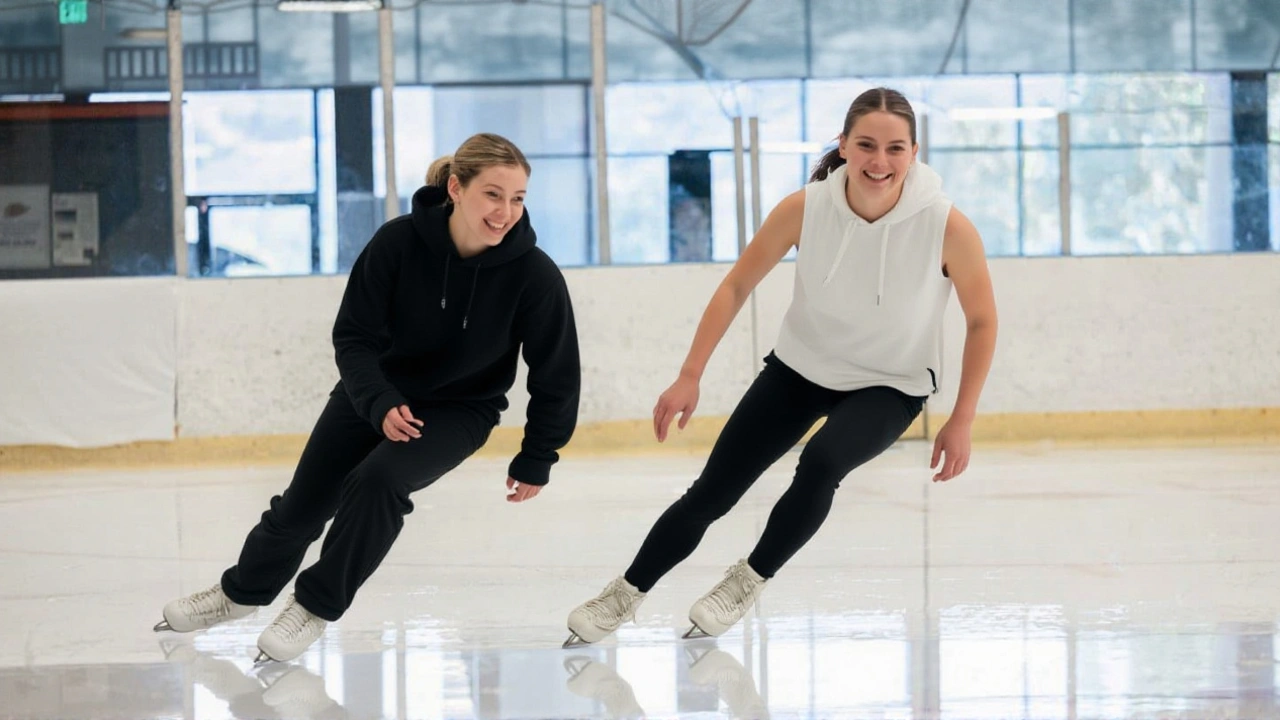On World Mental Health Dayglobally, the International Skating Union announced a suite of new wellbeing measures for the 2025‑26 season, aiming to protect athletes both on the ice and online. The rollout, timed to coincide with the October 10 observance, was presented by Jae Youl Kim, President of the ISU, who promised that the federation’s "Vision 2030" strategy would now "turn plans into action" with tangible support spaces and digital safeguards.
Why mental health is now a boardroom priority
The shift didn’t happen overnight. A 2023 survey by Podium Analytics, commissioned with YouGov, asked 2,000 UK adults about the role of mental health in sport. Seventy per cent of all respondents and a striking 75 % of active club members said governing bodies should weigh mental and physical health equally. Among 16‑17‑year‑olds, the figure rose to 13 % who listed mental health as a top‑priority issue, double the 5 % quoted by older adults. Those numbers nudged several federations, including the ISU, to re‑evaluate their safeguarding playbooks.
Calm Zones: Quiet corners in a high‑speed world
First piloted at the Montreal, Canada stop of the ISU Short Track World Tour, the Calm Zone is a physical sanctuary where skaters can step away from the roar of the crowd, cool down, and reset mentally. Photographs released on the day showed a modestly furnished tent with beanbags, soft lighting, and a hotline staffed by sports psychologists. "The idea is simple," President Kim explained, "provide a private space where athletes can breathe and talk to a professional without the pressure of the arena behind them."
Following the positive feedback from Montreal, the ISU Council voted on September 30, 2025 to roll the Calm Zone out to every major competition venue—including the World Championships in Heidelberg, Germany and the Grand Prix series in Tokyo, Japan—for the upcoming season.
Digital shield: Monitoring social‑media abuse
Physical safe spaces are only half the story. The ISU’s new social‑media monitoring programme will use AI‑driven sentiment analysis to flag harassing language directed at athletes on platforms such as Instagram, TikTok, and Twitter. When a post is identified, a dedicated response team will reach out to the athlete, offer counselling, and, if necessary, pursue formal complaints with the platform. "Online abuse is a silent killer of confidence, especially for younger competitors who grew up scrolling," said Dr. Lena Hoffmann, a sports‑psychology researcher at the University of Zurich. "The ISU’s approach is one of the most comprehensive I've seen in any sport federation."
Reactions from the skating community
Veteran short‑track star Kim Min‑seok praised the initiative, noting that "Having a place to step away after a tough race makes a huge difference. It’s not just about rest, it’s about mental clarity." Meanwhile, up‑and‑coming figure skater Ava Lévy, 19, admitted she had faced bullying on Instagram after a bad performance last season. "Knowing the federation has a watchdog gives me peace of mind," she said.
Not everyone is convinced the measures go far enough. The athletes’ union, World Athletes’ Alliance, issued a statement urging the ISU to add mandatory mental‑health education for coaches and to publish the monitoring programme’s findings publicly.
Impact beyond the ice rink
The ISU’s steps echo a broader trend across sport. After the 2024 Olympic Games, the International Olympic Committee (IOC) hosted a session at the Olympism365 Summit—held in Paris, France—where officials discussed "digital safety" for athletes. The ISU’s Calm Zone presentation, captured in an IOC‑licensed photo, was highlighted as a best‑practice case study.
Experts predict that if the program delivers measurable improvements—such as a 15 % drop in reported online harassment incidents and higher satisfaction scores in post‑event athlete surveys—other federations, from World Athletics to FINA, may follow suit. "We’re at a tipping point," Dr. Hoffmann added. "When a leading body like the ISU puts its money behind mental‑wellbeing, the ripple effect can reshape the entire sports ecosystem."
Measuring success and future steps
To track effectiveness, the ISU will conduct anonymous athlete‑feedback surveys after each major event, aiming for at least a 70 % response rate. Results, together with usage data from the Calm Zones and the AI monitoring dashboard, will be compiled into a safeguarding review due by 31 March 2026.
Looking ahead, President Kim hinted at expanding the digital shield to include a 24‑hour helpline and partnerships with national anti‑bullying organisations. "Our vision is a world where every skater feels safe, whether they're on the ice, in the locker room, or scrolling a feed," he said.
Key Facts
- Announcement date: 10 October 2025 (World Mental Health Day)
- Primary actors: Jae Youl Kim (President, ISU) and the International Skating Union
- New measures: Calm Zones at all major venues; AI‑driven social‑media monitoring
- Pilot site: Montreal, Canada (Short Track World Tour)
- Evaluation deadline: 31 March 2026 (annual safeguarding review)
Frequently Asked Questions
How will the Calm Zones be accessed by athletes?
Each venue will have a clearly marked Calm Zone staffed by qualified sports‑psychologists. Athletes can request entry via a wrist‑band scanner or by notifying a team official, ensuring immediate, private access without disrupting competition flow.
What types of online harassment will the monitoring program target?
The AI tool flags hate speech, personal attacks, and threats directed at athletes or their families. Once flagged, a human review team evaluates the severity and initiates support, which may include counseling, legal advice, or platform‑based takedown requests.
Will the ISU publish the results of its mental‑health initiatives?
Yes. The federation plans to release an annual safeguarding review—including survey data, usage statistics, and impact assessments—by the end of March each year, beginning with the 2025‑26 report.
How does this initiative compare to mental‑health programs in other sports?
While many federations have introduced mental‑health ambassadors, the ISU combines physical safe spaces with an AI‑driven digital shield—a hybrid model still rare in global sport. It follows the IOC’s recent emphasis on digital safety but pushes the envelope further by making the service mandatory at every event.
What is the long‑term vision for athlete wellbeing in the ISU?
Under Vision 2030, the ISU aims to embed holistic wellbeing into its governance, making mental health equal to physical health in all policy decisions, training curricula, and competition protocols, with the ultimate goal of a zero‑tolerance environment for harassment.







Ankit Intodia
October 10, 2025 AT 22:42 PMIt's fascinating how the ISU is finally treating the mind like a muscle that needs conditioning. The Calm Zones feel almost like meditation pods for skaters, offering a brief reprieve from the relentless clang of competition. By pairing that with AI‑driven monitoring, they're addressing both the physical and digital stressors. One could argue this is a small but crucial step toward holistic athlete care. Kudos to the federation for listening to the data and the voices of the community.
Aaditya Srivastava
October 12, 2025 AT 02:29 AMThe move feels pretty chill, especially for younger skaters who grew up scrolling social feeds. Having a safe spot at venues can really help calm nerves after a rough race. Plus, the AI watchdog shows they’re keeping an eye on online trolls.
Harman Vartej
October 13, 2025 AT 06:15 AMGreat step forward.
Amar Rams
October 14, 2025 AT 10:02 AMThe International Skating Union's latest initiative represents a paradigmatic shift in athlete welfare, integrating psychophysiological recuperation environments with algorithmic content moderation. By institutionalising Calm Zones, the federation operationalises an evidence‑based framework that mitigates cortisol spikes associated with high‑intensity performance contexts. Moreover, the deployment of natural language processing classifiers to detect harassment exemplifies a proactive stance against digital psychosocial aggression. This bifurcated model aligns with contemporary sport‑science literature advocating for concurrent somatic and cybernetic resilience strategies. The anticipated reduction in reported online abuse, projected at fifteen percent, is underpinned by reinforcement learning loops that refine detection thresholds over successive competitions. Additionally, the anonymised feedback mechanism will furnish longitudinal data conducive to meta‑analytical assessments of mental‑health interventions across sport domains. Stakeholders, ranging from coaches to national anti‑bullying agencies, stand to benefit from the federated data repository scheduled for release in March 2026. Critics may contend that mandatory participation incurs logistical overhead; however, the cost–benefit calculus favours long‑term athlete retention and performance optimisation. In sum, the ISU's hybrid safeguard architecture could serve as a blue‑print for other governing bodies seeking to embed holistic wellbeing into their governance structures.
Rahul Sarker
October 15, 2025 AT 13:49 PMThis is exactly the kind of bold action we need, especially when foreign media love to harp on our athletes' failures. The AI monitoring will crack down on the hate trolls that try to undermine our national pride. Calm Zones are perfect for our skaters to recharge and keep their focus razor‑sharp. If other federations think they can ignore these issues, they're just setting themselves up for disaster.
Sridhar Ilango
October 16, 2025 AT 17:35 PMYo, this whole Calm Zone thing sounds like a sci‑fi lounge for skaters-like, imagine stepping into a tent with beanbags while the crowd’s screaming outside, total zen vibes! And the AI‑driven watchdog? That's like giving the trolls a digital leash, lol! Can't help but think the ISU finally realized that mental health ain't just a buzzword, it's the real MVP behind those triple axels. Still, hope they actually staff those hotspots with real psychologists, not just a pop‑up brochure. If they pull it off, other sports will be forced to copy or risk looking archaic. But hey, let's keep the hype in check and see the actual usage stats before we crown them heroes.
priyanka Prakash
October 17, 2025 AT 21:22 PMThe initiative is a solid foundation, but it stops short of mandating mental‑health training for coaches, which is essential. Without educating the people who shape athletes daily, the Calm Zones become a band‑aid rather than a cure. Transparency in the AI monitoring results would also build trust among skaters. I urge the ISU to push these next steps without delay.
Pravalika Sweety
October 19, 2025 AT 01:09 AMWhile the AI system sounds promising, it’s crucial that any flagged content is reviewed by qualified human psychologists to avoid false positives. Ensuring athletes can opt‑in or out of the monitoring respects personal privacy. Overall, this balanced approach could set a respectful precedent.
anjaly raveendran
October 20, 2025 AT 04:55 AMFrom an evidence‑based perspective, the ISU's dual‑track strategy aligns with best practices in sports psychology. The anonymised surveys will generate valuable data, provided the response rate target is met. Moreover, integrating a 24‑hour helpline could address acute crises beyond competition periods. It's imperative that the findings be published in peer‑reviewed formats to validate efficacy.
Danwanti Khanna
October 21, 2025 AT 08:42 AMAppreciate the holistic vision, though the rollout will need careful coordination to avoid logistical snags. Consistent staffing and clear signage are key to making Calm Zones truly accessible. Looking forward to seeing the impact metrics once the season concludes.